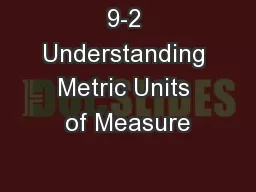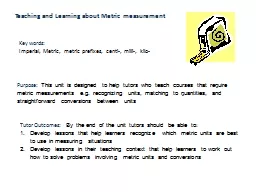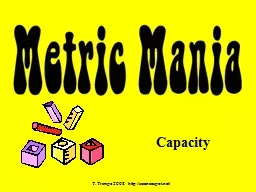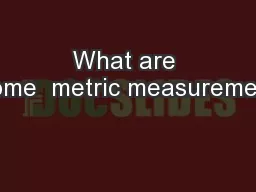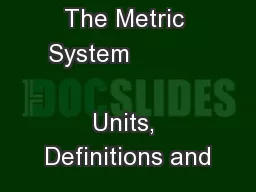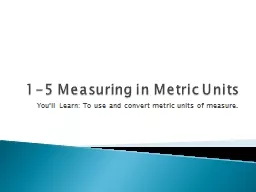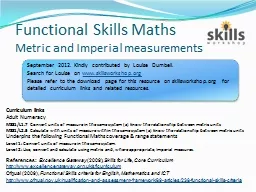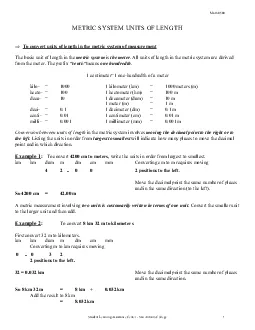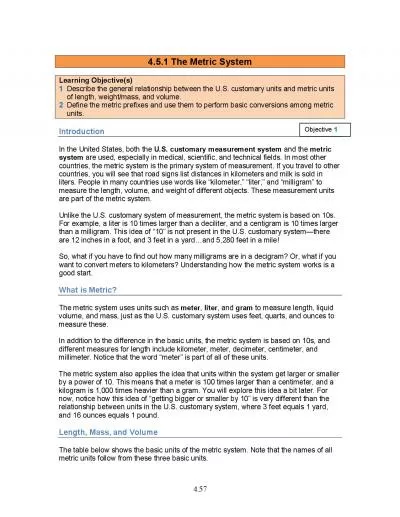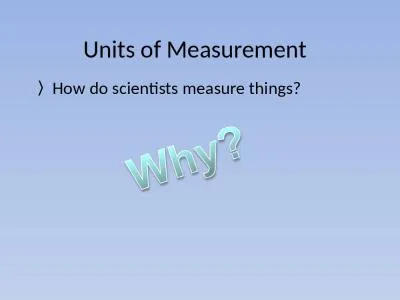PPT-9-2 Understanding Metric Units of Measure
Author : lindy-dunigan | Published Date : 2017-09-19
Course 1 Warm Up Lesson Presentation Problem of the Day Warm Up Multiply the following by 1000 1 003 2 402 Divide the following by 1000 3 30 4 4871 30 4020
Presentation Embed Code
Download Presentation
Download Presentation The PPT/PDF document "9-2 Understanding Metric Units of Measur..." is the property of its rightful owner. Permission is granted to download and print the materials on this website for personal, non-commercial use only, and to display it on your personal computer provided you do not modify the materials and that you retain all copyright notices contained in the materials. By downloading content from our website, you accept the terms of this agreement.
9-2 Understanding Metric Units of Measure: Transcript
Download Rules Of Document
"9-2 Understanding Metric Units of Measure"The content belongs to its owner. You may download and print it for personal use, without modification, and keep all copyright notices. By downloading, you agree to these terms.
Related Documents

